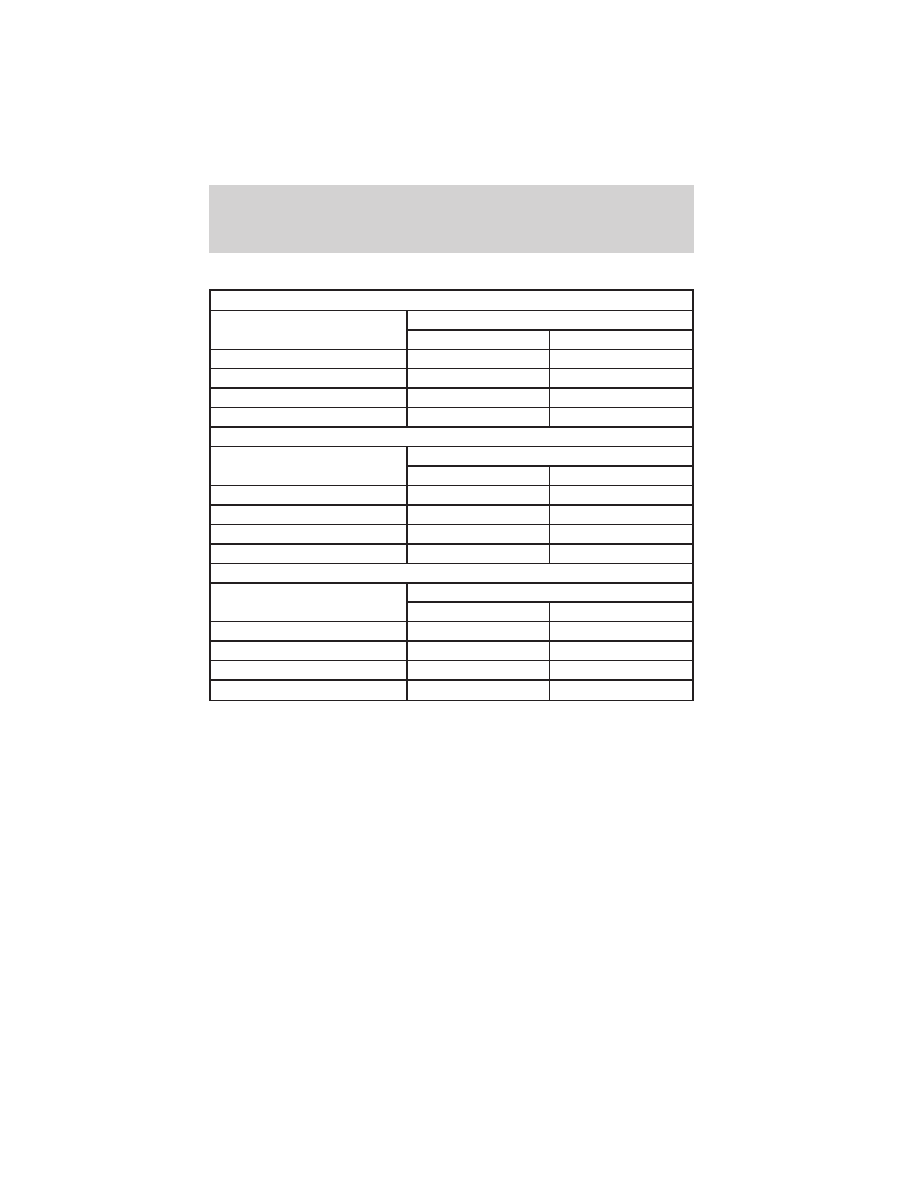Mazda B3000 (2002 year). Instruction - part 11

RECOMMENDED SHIFT SPEEDS
Upshifts when accelerating (for best fuel economy)
Shift from:
Transfer case position (if equipped)
4H
4L
1 - 2
14 km/h (10 mph)
5 km/h (4 mph)
2 - 3
32 km/h (22 mph)
11 km/h (9 mph)
3 -4
50 km/h (33 mph)
19 km/h (13 mph)
4 - 5 (Overdrive)
71 km/h (41 mph)
27 km/h (17 mph)
Upshifts when cruising (recommended for best fuel economy)
Shift from:
Transfer case position (if equipped)
4H
4L
1 -2
16 km/h (10 mph)
6 km/h (4 mph)
2 - 3
26 km/h (19 mph)
10 km/h (8 mph)
3 - 4
43 km/h (28 mph)
16 km/h (12 mph)
4 - 5 (Overdrive)
68 km/h (40 mph)
26 km/h (16 mph)
Maximum downshift speeds
Shift from:
Transfer case position (if equipped)
4H
4L
5 (Overdrive) - 4
88 km/h (55 mph)
34 km/h (22 mph)
4 - 3
72 km/h (45 mph)
27 km/h (18 mph)
3 - 2
56 km/h (35 mph)
21 km/h (14 mph)
2 - 1
32 km/h (20 mph)
11 km/h (8 mph)
REVERSE
Ensure that the vehicle is at a complete stop before shifting into R
(Reverse). Failure to do so may damage the transmission.
Put the gearshift lever into N and wait at least several seconds before
shifting into R.
You can shift into R (Reverse) only by moving the gearshift lever from
left of 3 (Third) and 4 (Fourth) gears before you shift into R (Reverse).
This is a special lockout feature that protects you from accidentally
shifting into R (Reverse) when you downshift from 5 (Overdrive).
Driving
164